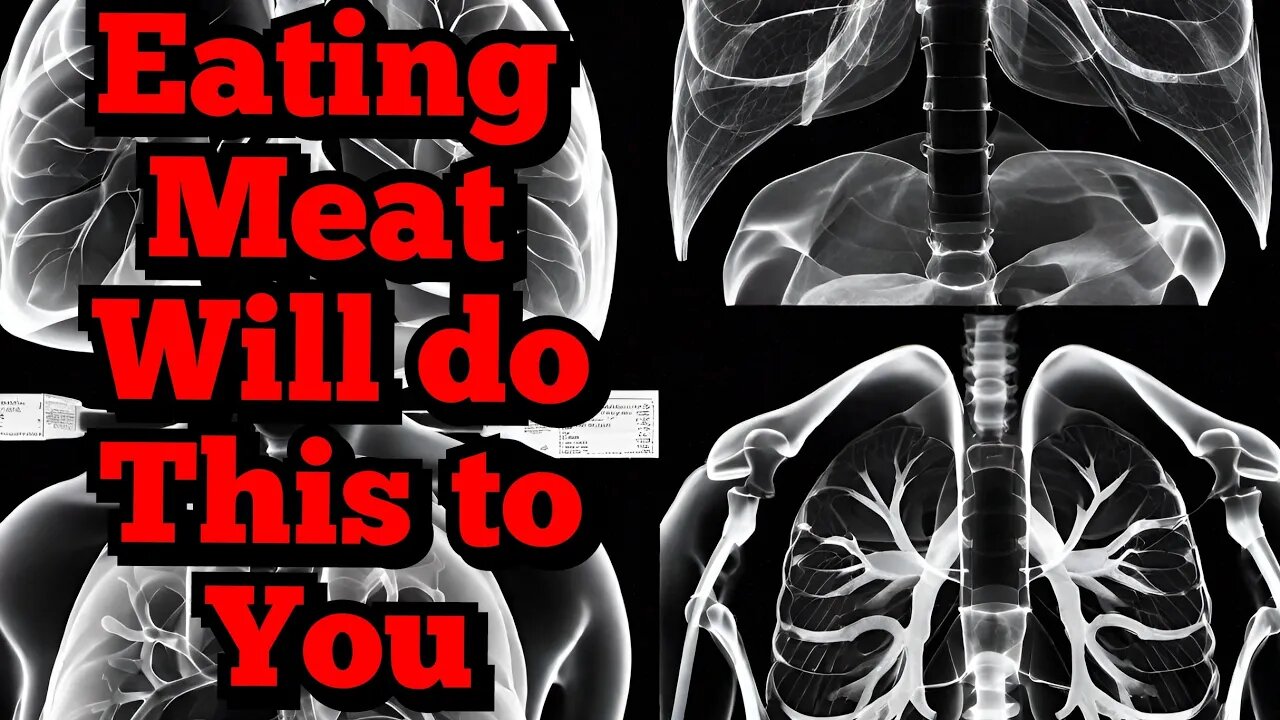Premium Only Content

Warning : Eating Meat will Destroy your teeth , Lungs , nails, hair and give you Cancer.
Cigarette warning labels are a critical component of public health campaigns aimed at informing and educating the public about the dangers of smoking. These labels typically appear on cigarette packaging and, in some cases, on advertising materials. The primary purpose of these warnings is to raise awareness about the severe health risks associated with smoking, discourage tobacco use, and promote a greater understanding of the potential consequences of this habit. The content, design, and placement of these warning labels vary across countries, but their common goal is to communicate the health hazards associated with tobacco consumption.
One of the earliest instances of warning labels on cigarette packages dates back to the mid-20th century when researchers and health advocates began to recognize the link between smoking and serious health issues. As scientific evidence accumulated, governments worldwide began to implement regulations to address the rising public health concerns related to tobacco use. Warning labels have since become a key strategy in these efforts.
The content of cigarette warning labels typically includes information about the health risks of smoking, such as the increased likelihood of developing lung cancer, heart disease, respiratory issues, and other severe medical conditions. These labels may also highlight the addictive nature of nicotine, the primary psychoactive substance in tobacco, and the difficulties associated with quitting smoking.
In many countries, warning labels are required by law and are often accompanied by graphic images that visually depict the potential consequences of smoking. These images may include depictions of diseased organs, damaged lungs, or other health-related visuals meant to evoke an emotional response and make a lasting impact on the viewer. The use of graphic imagery is based on the understanding that it can be more compelling and memorable than text alone.
The effectiveness of cigarette warning labels has been a subject of extensive research. Studies suggest that impactful warnings, particularly those featuring graphic images, can increase knowledge about the risks of smoking, enhance the perception of these risks, and even motivate individuals to quit or deter them from starting to smoke. However, the impact may vary based on factors such as the design of the warnings, the level of exposure, and individual characteristics.
While many countries have implemented strong warning label regulations, there is ongoing debate about the extent to which these warnings influence behavior. Some argue that, over time, people may become desensitized to the warnings, diminishing their impact. Others contend that the warnings play a crucial role in shaping societal attitudes toward smoking and contribute to the overall decline in smoking rates observed in many regions.
In addition to traditional warning labels on cigarette packaging, some countries have taken more innovative approaches to anti-smoking campaigns. These efforts include multimedia campaigns, public service announcements, and online initiatives to reach broader audiences. Social media platforms and digital communication channels have become
increasingly important tools in disseminating anti-smoking messages and engaging with diverse demographic groups.
The development and implementation of warning labels face challenges, including opposition from tobacco industry stakeholders who may resist or seek to dilute the impact of these warnings. In some cases, legal battles have ensued over the specific content and design of warning labels, reflecting the ongoing tension between public health interests and commercial considerations.
The global landscape of cigarette warning labels continues to evolve as new research emerges, and public health strategies adapt to changing societal attitudes and communication trends. Many countries regularly update their warning labels to ensure they remain relevant and impactful. In this dynamic context, the collaboration between public health authorities, researchers, advocacy groups, and policymakers is crucial to maintaining effective warning label strategies that contribute to reducing the prevalence of smoking and improving overall public health.
#mikemartins #mikeinthenight
Cigarette Warning Labels, Public Health, Smoking Risks, Tobacco Education, Anti-Smoking Campaigns, Graphic Warnings, Nicotine Addiction, Health Advocacy, Tobacco Regulation, Quit Smoking, Respiratory Health, Lung Cancer, Heart Disease, Addiction Awareness, Health Communication, Graphic Imagery, Tobacco Industry, Public Awareness, Smoking Dangers, Multimedia Campaigns, Social Impact, Health Education, Behavioral Change, Public Policy, Smoking Cessation, Tobacco Control, Warning Label Design, Disease Prevention, Anti-Tobacco Initiatives, Visual Communication, Legal Battles.
-
 6:53
6:53
Mike Martins Channel
4 days agoStrata Fee Mafia in Canada
107 -
 LIVE
LIVE
Nerdrotic
2 hours ago $1.03 earnedThe Mysteries of Mars and the Moon with Mike Bara | Forbidden Frontier #114
453 watching -
 3:03:40
3:03:40
Barry Cunningham
5 hours agoPRESIDENT TRUMP IS THE TROLLER-IN-CHIEF AND MORE BREAKING NEWS!
23.7K22 -
 13:07
13:07
Robbi On The Record
3 hours ago $1.48 earnedSweet Poison: The Big Fat Lie That’s Killing America
6.68K5 -
 1:00:09
1:00:09
Sarah Westall
2 hours agoFlorida Surgeon General: Operation Warp Speed plus Attacks on RFK Jr w/ Dr Ladapo
10.7K8 -
 11:52
11:52
Tundra Tactical
7 hours ago $0.92 earnedWhy the SIG P320 Is the King of Gun Memes 💥😂
8.18K -
 1:39:35
1:39:35
Kevin Trudeau
8 hours agoKevin Trudeau: The Complete Creation Algorithm to Manifest Your Goals & Desires
8.92K6 -
 1:11:14
1:11:14
Ohio State Football and Recruiting at Buckeye Huddle
4 hours agoOhio State Football: Instant Reaction from the 14-7 win over Texas
7.34K2 -
 18:01
18:01
Tactical Advisor
2 hours agoNew Miniature AR15 / New Guns | Vault Room Live Stream 037
14.9K4 -
 2:02:10
2:02:10
Akademiks
5 hours agoWar in RAT-LANTA. Young Thug vs Gunna vs Ralo vs YSL MONDO. Who Will Le Bebe Pick. FINAL CRASHOUT!
40.2K8